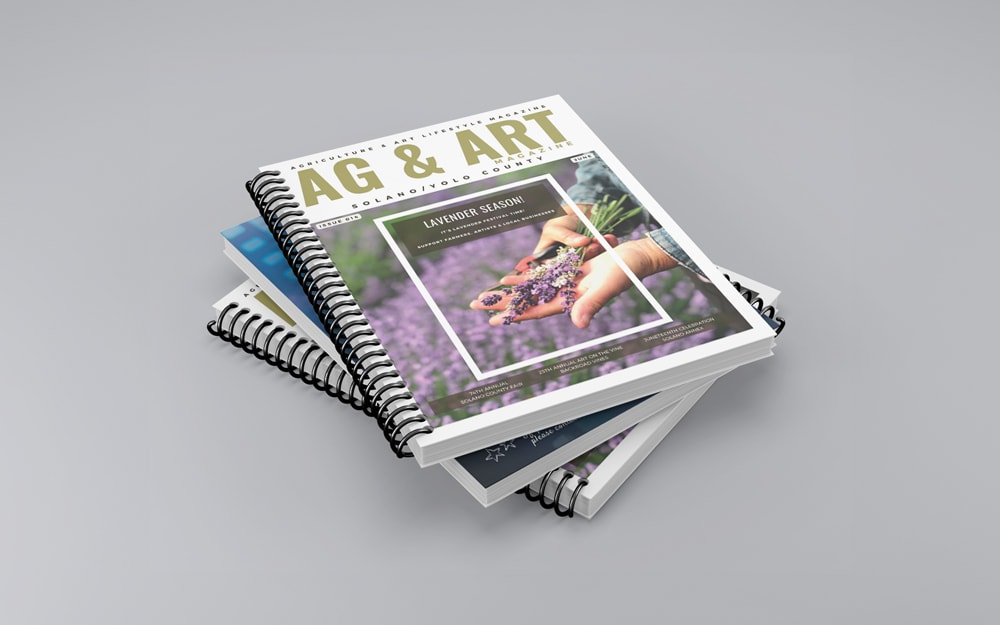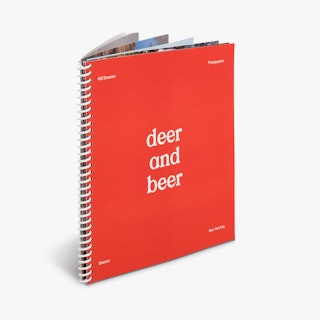7 Must-Know Tips for Affordable Booklet Printing Solutions
7 Must-Know Tips for Affordable Booklet Printing Solutions
Blog Article
The Essential Overview to Comprehending Brochure Printing Options and Techniques
The process of brochure printing entails numerous considerations that can substantially affect the end product. From picking the proper style and size to comprehending the nuances of binding methods, each selection plays a vital duty. Furthermore, variables such as paper stock and printing strategies additional influence the performance of the brochure. As one browses these alternatives, it comes to be necessary to understand how they adjoin and what that suggests for the overall end result.
Understanding Pamphlet Sizes and layouts
When thinking about pamphlet printing, comprehending the numerous layouts and sizes readily available is necessary for achieving the preferred discussion. Booklets can be created in numerous styles, consisting of saddle-stitched, spiral-bound, and perfect-bound, each offering distinct benefits. Usual sizes range from typical letter (8.5 x 11 inches) to smaller choices like A5 (5.8 x 8.3 inches), permitting versatility based upon content and target audience.Selecting the proper dimension can affect both the design and visitor involvement. Larger sizes could match visually driven content, while smaller formats may be extra user-friendly and mobile. In addition, the variety of pages affects the choice of binding technique, as thicker brochures might require sturdier bindings. Eventually, comprehending these aspects permits an extra tailored approach, guaranteeing that the final product aligns with the desired message and visual, improving the total performance of the interaction.
Picking the Right Paper Supply

Binding Approaches: Considerations and choices
When it pertains to binding methods for booklets, several choices are offered, each with distinctive benefits. Saddle stitch binding offers an economical remedy for thinner pamphlets, while perfect binding techniques offer an even more refined search for thicker magazines. Wire-O binding attracts attention for its longevity and ease of use, making it optimal for papers that need versatility.
Saddle Stitch Binding
Saddle stitch binding offers a useful and economical remedy for assembling pamphlets, making it a popular option among companies and authors. This binding technique involves folding sheets of paper in half and stapling them along the fold line, producing a neat and well organized appearance. Usually ideal for brochures with a lower web page matter, saddle stitching is perfect for publications, pamphlets, and instructional products. The simplicity of this method permits for fast production and is typically favored for advertising products or brief runs. Nevertheless, it is vital to note that saddle stitch binding might not appropriate for thicker booklets, as the spine might not hold up under raised weight. On the whole, it stays a reputable option for several printing projects.
Perfect Binding Techniques
Perfect binding is an extensively used technique that offers a expert and sleek finish to publications and brochures. This method entails gluing the pages together at the back using a solid adhesive, permitting a tidy edge and the ability to hold a larger variety of pages contrasted to saddle sewing. Perfect binding is especially ideal for thicker booklets, such as catalogs and yearly reports, where a strong, flat spinal column is wanted. Additionally, it provides the option for a published cover that can be designed to improve aesthetic allure. Considerations such as page matter, paper weight, and the intended use of the pamphlet must be taken into account, as they can influence sturdiness and overall quality.
Wire-O Binding Choices
Wire-O binding, known for its resilience and adaptability, uses an excellent option for booklets that require easy page transforming and a professional appearance. This binding method utilizes a series of metal loopholes that hold web pages securely, allowing them to exist level when open. It is specifically ideal for directories, handbooks, and presentations because of its robust nature. Wire-O binding is available in various shades and sizes, fitting various web page counts and thicknesses. In addition, it permits the inclusion of covers and tabs, boosting the brochure's overall visual. Factors to consider for Wire-O binding include the choice of cord color, the size of the loopholes, and the extent of customization wanted, every one of which can profoundly affect the final item's look and capability.
Digital vs. Offset Printing: Which Is Best for You?
When choosing a printing method for pamphlets, comprehending the distinctions in between electronic and offset printing is essential. Digital printing makes use of modern innovation to create top notch prints rapidly and cost effectively, making it optimal for short runs or jobs needing quick turn-around times. It enables modification, offering the capacity to print on-demand with minimal waste.In contrast, balance out printing is a traditional approach that masters generating large quantities with consistent top quality. It includes transferring ink from a plate to a rubber blanket, after that to the paper, which leads to vibrant these details colors and accurate information. Offset printing normally calls for longer setup times and is much more economical for bigger volumes.Ultimately, the selection between electronic and offset printing depends on task needs, budget, and desired quantity. For small, time-sensitive jobs, digital may be the most effective option, while offset may be more effective for bigger, high-quality productions.

Designing Your Pamphlet: Tips and Ideal Practices
When making a pamphlet, cautious attention to layout, typeface choice, and color use can greatly boost its performance. A well-structured design guides the viewers's eye, while proper font styles ensure readability and communicate the preferred tone. Additionally, efficient use of shade can evoke feelings and emphasize crucial information, making the total style more impactful.
Picking the Right Design
How can one properly select the right format for a booklet? It is necessary to examine the brochure's function and target audience. A tidy, organized design improves readability and involvement. Utilizing a grid system can aid in straightening elements constantly, creating an expert look. Additionally, integrating aesthetic hierarchy with differing dimensions and placements of pictures and message can guide the visitor's eye and stress essential details. It is also crucial to leave enough white space, which stops congestion and enables much better emphasis. Examining different layouts through mock-ups can offer insight right into exactly how the layout executes in real-world circumstances, ensuring that the last item meets both aesthetic and functional requirements. Useful Selecting Suitable Fonts
A well-chosen font can significantly improve the total layout of a pamphlet, enhancing the design and enhancing the material's message. The selection of fonts should consider readability, especially for body text, as it assures the information comes to all visitors. Sans-serif font styles are typically liked for digital formats, while serif typefaces can offer a typical feel in printed products. It's suggested to limit font options to 2 or 3 to keep aesthetic coherence. Additionally, typeface dimension plays an essential function; headings should be not overwhelming yet unique, while body message should be comfortable for analysis. When selecting typefaces, positioning with the booklet's theme and target market is necessary for efficient communication and visual charm.
Reliable Use Shade
Shade works as an effective device in brochure style, shaping understandings and guiding viewers emotions. It can stimulate sensations of excitement, calmness, or trust fund, depending upon the hues selected. Developers need to consider color theory concepts, guaranteeing that the selected combination lines up with the pamphlet's message and target market. As an example, using warm shades like red and orange can create seriousness, while cooler tones like environment-friendly and blue foster tranquility.Additionally, contrast plays a crucial role; complementary colors can improve readability and aesthetic appeal. Uniformity in shade usage across pages even more enhances brand name identity and cohesion. Ultimately, effective color execution not just captures attention but additionally enhances the booklet's purpose, making it an important facet of effective layout.
Completing Touches: Coatings and Unique Effects
While lots of take into consideration the web content and layout of a booklet one of the most vital aspects, the completing touches, such as coverings and special impacts, play a vital duty in enhancing its general allure. Coatings can provide defense and longevity, making sure that the booklet stands up to wear and tear. Matte surfaces use an innovative, non-reflective surface area, while shiny layers can make shades show up even more vibrant and distinctive. Unique impacts, like embossing or foil stamping, include a tactile measurement that can create a memorable impression. These techniques can highlight specific locations, accentuating vital info or producing aesthetic rate of interest. In addition, UV finishing can supply a high-shine surface that raises the total look.Together, these ending up touches not just enhance the booklet's visual yet additionally interact professionalism and reliability and attention to detail, eventually leaving a lasting effect on the visitor.
Expense Considerations for Brochure Printing
Understanding the numerous expense considerations for booklet printing is vital for companies and services aiming to maximize their spending plans. Key variables influencing see post costs include the option of ink, binding, and paper approaches. Higher high quality materials, such as exceptional paper or specialized inks, normally boost the overall expenditure. Additionally, the size and page matter of the brochure play a considerable duty; larger brochures require more resources and time to produce.Another essential factor to consider is the printing strategy, whether electronic or countered, as each has its very own prices framework and viability for different quantities. Services should likewise consider design costs, which can differ based upon intricacy and making use of specialist solutions. Inevitably, shipping and handling fees can include to the total, specifically for big orders. By evaluating these elements, organizations can make informed decisions that line up with their monetary capacities while attaining the wanted top quality in their printed materials.
Frequently Asked Questions
What Are the Ecological Influences of Pamphlet Printing?
The ecological effects of brochure printing consist of logging from paper production, carbon emissions from transportation, and waste generation from discarded products - Booklet Printing. Lasting practices, such as utilizing recycled paper and eco-friendly inks, can alleviate these impacts
Exactly How Can I Ensure Color Precision in My Booklet?
To assure color precision in a booklet, one must use adjusted screens, use expert shade accounts, perform examination prints, and pick top notch printing services that supply shade matching and proofing options for ideal results.
What Is the Common Turn-around Time for Booklet Printing?
The typical turnaround time for booklet printing varies depending on the intricacy and amount - Booklet Printing. Generally, it ranges from a few days to 2 weeks, affected by elements such as publishing approaches and finishing needs
Exist Minimum Order Quantities for Booklet Printing?

Can I Print Pamphlets in Numerous Languages?
Printing pamphlets in several languages is feasible. Many webpage printing solutions provide alternatives for multilingual or bilingual layouts, enabling efficient interaction. Cautious planning guarantees that design elements accommodate various languages without endangering readability or appearances. Additionally, aspects such as paper stock and printing strategies additional affect the efficiency of the pamphlet. When taking into consideration pamphlet printing, comprehending the different layouts and dimensions available is essential for accomplishing the wanted presentation. When picking a printing approach for brochures, comprehending the differences in between digital and offset printing is vital. In addition, the size and web page count of the pamphlet play a significant duty; bigger booklets call for more resources and time to produce.Another crucial factor to consider is the printing strategy, whether electronic or countered, as each has its very own rates structure and suitability for various amounts. The ecological impacts of pamphlet printing consist of logging from paper production, carbon discharges from transportation, and waste generation from disposed of materials.
Report this page